You may need to access your system BIOS to change some settings, like enable or disable the Hardware Virtualization. If, for some reason, your keyboard or mouse becomes unresponsive in BIOS or UEFI, you cannot make changes to BIOS or UEFI. In this article, we will see what you can do if your keyboard or mouse is not working in BIOS.
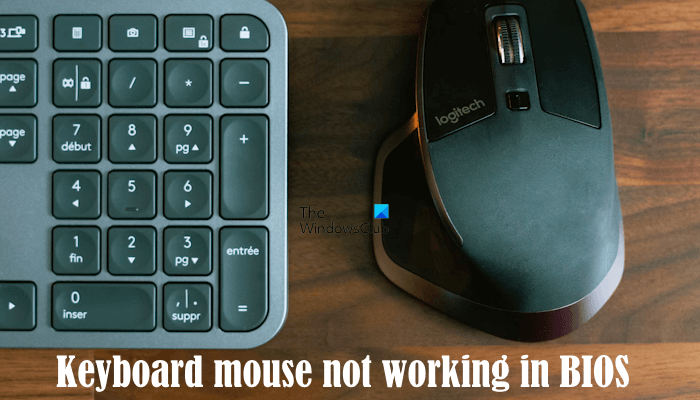
Keyboard or Mouse not working in BIOS
Use the following suggestions if your keyboard or mouse is not working in the BIOS or firmware settings of your Windows computer:
- How old is your computer?
- Try other USB ports
- Update BIOS and Keyboard/Mouse driver
- Enable Legacy USB Support in BIOS
- Are you using a gaming keyboard?
- Disable Fast Boot in BIOS
- Clear CMOS.
Let’s see all these fixes in detail.
1] How old is your computer?
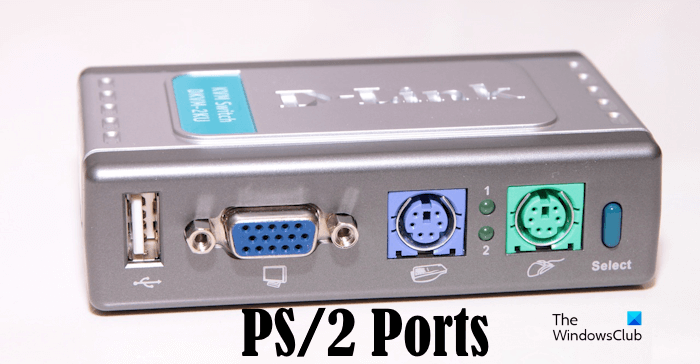
Older computers may not have support for USB devices in BIOS. The computers come with two PS/2 ports, one for a keyboard and the other for a mouse. If you have such a computer, you may not use the USB keyboard in BIOS. In such a case, you have to buy a PS/2 keyboard.
2] Try other USB ports
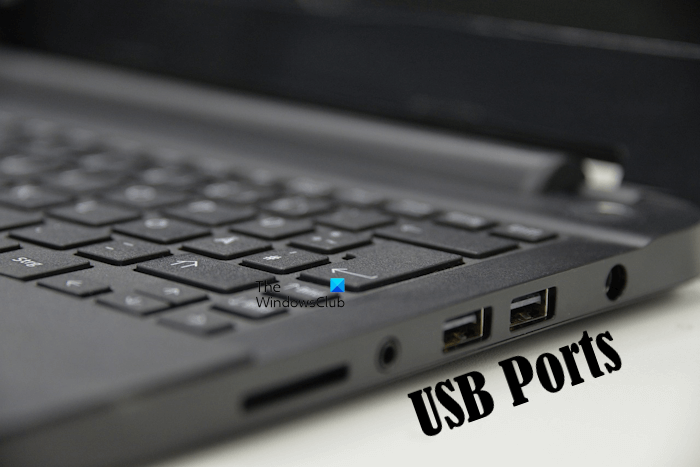
Connect your keyboard or mouse to all available USB ports and see if it works. If you are a desktop computer user, connect your USB keyboard or mouse to all USB ports available on both the front and the back sides of the case.
3] Update BIOS and Keyboard/Mouse driver
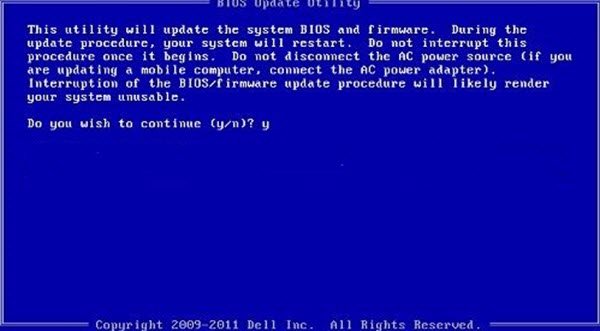
You should update your BIOS as well as your Keyboard or Mouse drivers and see if it helps.
4] Enable Legacy USB Support in BIOS
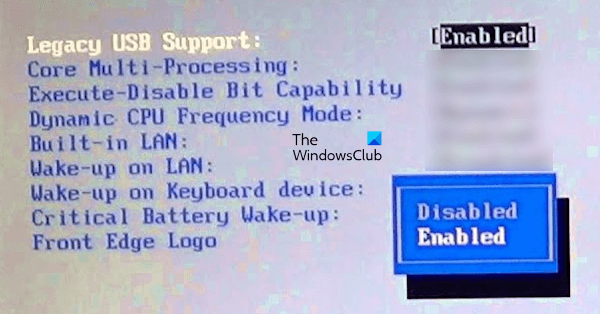
If your BIOS has Legacy USB Support, check if it is enabled or not. Your USB keyboard will start working after you enable the Legacy USB Support in your BIOS. Usually, if a system has the Legacy USB Support for BIOS, the option to enable and disable this mode is available in the Advanced settings in BIOS. You can also refer to your manufacturer’s support website to know whether your system has the Legacy USB Support for BIOS or not.
5] Are you using a gaming keyboard?
If you are using a gaming keyboard, it may not work in BIOS. This is because some gaming keyboards have different modes. If the gaming configuration mode is active on your gaming keyboard or mouse, it will not work in BIOS/UEFI. You need to visit the manufacturer’s website of your gaming keyboard or mouse to know whether it has a separate BIOS mode.
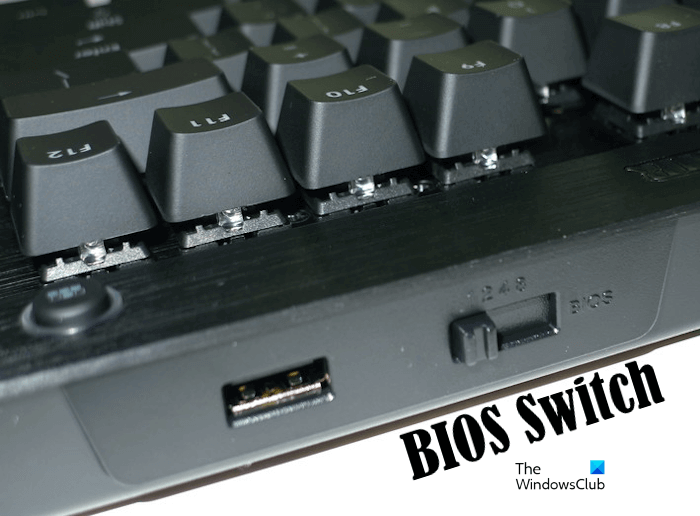
Some gaming keyboards have a physical switch using which you can enable and disable the BIOS mode. Whereas, some gaming keyboards use a special key combination to activate and deactivate the BIOS mode. For example, for most Corsair keyboards, you can activate the BIOS mode by following the steps written below:
- Press and hold the Windows Lock key and the F1 function key on the keyboard at the same time.
- Wait for 5 seconds.
- Release the Windows Lock key and the F1 function key.
6] Disable Fast Boot in BIOS
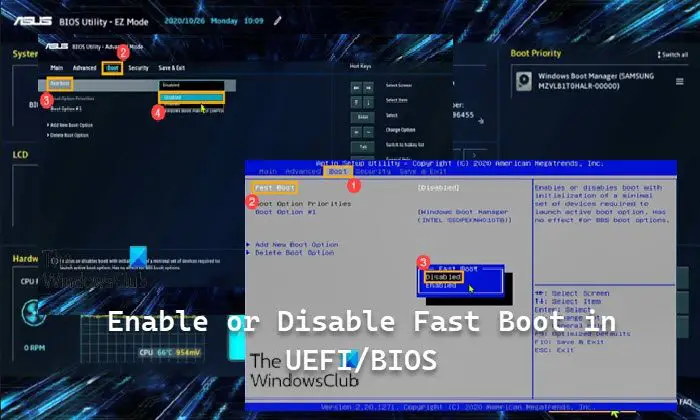
Fast Boot is a feature in UEFI or BIOS that reduces your computer boot time. According to the reports, the keyboard or mouse did not work for some users because the Fast Boot option was enabled in their system BIOS. Check if the same thing applies to you or not. If yes, disable Fast Boot.
7] Clear CMOS
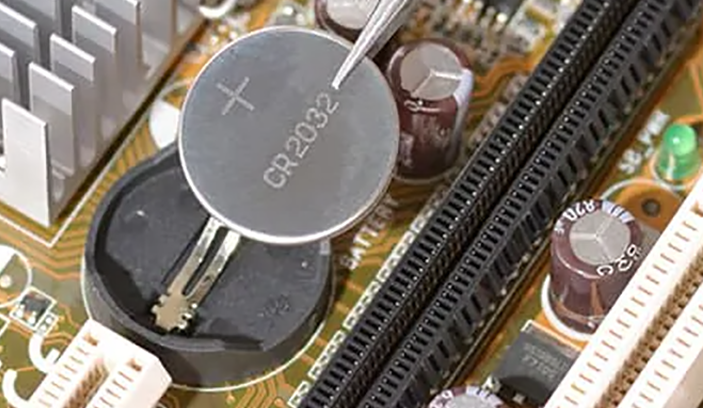
Clearing CMOS will reset your BIOS settings to the default. A CMOS battery is installed on all computers that provide the continuous power supply to the BIOS chip so that all the BIOS settings remain saved even after the computer is turned off. Removing the CMOS battery will clear the CMOS and reset your system BIOS. Reset or clear CMOS and see if it fixes the issue.
That’s it. I hope this helps.
Read: Windows computer unable to boot to BIOS.
Why won’t my mouse work in BIOS?
If your BIOS mode is legacy, your mouse may not work in BIOS. Hence, you have to use only the keyboard in Legacy BIOS. If your BIOS mode is UEFI, both the mouse and the keyboard will work. However, if your BIOS supports both mouse and keyboard inputs but your mouse is not working in BIOS, there can be many reasons for this. Sometimes, Fast Boot causes issues with the mouse and keyboard in BIOS.
How do I turn on my computer keyboard in BIOS?
Computer keyboard is already enabled in BIOS by default. However, if your keyboard is not working in BIOS, you need to check your BIOS settings. If your BIOS has Legacy USB Support, you need to enable that option. If you have an old computer, the USB keyboard may not work. In this case, try PS/2 Keyboard.
Read next: BIOS not showing on the external monitor.
Leave a Reply